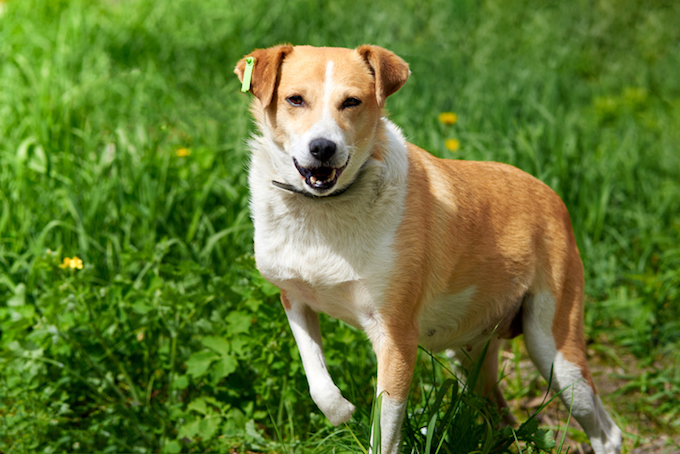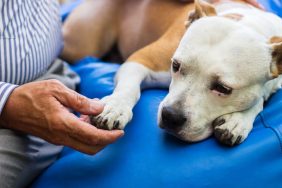Hypertrophic osteodystrophy in dogs is an inflammatory condition that affects a a dog’s front legs. The condition causes swelling and limping.
Unfortunately, larger dogs breeds are most at risk of the condition. For example, Labrador Retrievers, Great Danes, and Weimaraners often develop the condition.
Technically, the condition is also referred to as HOD.
Also, note that despite sounding similar, the condition is different to hypertrophic osteopathy. You can read more about that here.
If you see the signs of the condition in your dog, then get to a veterinarian for a proper diagnosis and treatment.
Here’s what you should know about the symptoms, causes, and treatments for the condition.
Symptoms of Hypertrophic Osteodystrophy in Dogs
The condition produces a wide range of symptoms. Usually, the symptoms affect the legs. For example, some of the most common symptoms include:
- Limping
- Swollen front legs
- Not wanting to move around
- Appetite loss
- Weight loss
- Fatigue
- Diarrhea
- Fever
Causes of the Condition in Dogs

The cause of the condition is technically unknown. However, some of the factors that are suspected to cause it include diet and genetics. For example, the following breeds suffer from the condition more than other breeds:
- Great Dane
- Labrador Retriever
- German Shepherd
- Doberman Pinscher
- Weimaraner
- Irish Setter
- Basset Hound
Additionally, male dogs are more likely to suffer from the condition than female dogs.
Treatments for the Condition in Dogs
Firstly, your vet will ask about your dog’s symptoms. Secondly, your vet will ask about your dog’s medical history. This will include any breed-specific problems.
Thirdly, a full physical examination will be carried out. Blood and urine tests will also be taken.
Ultimately, an X-ray will be used to diagnose the condition.
Generally, treatment will focus on pain management. Usually, anti-inflammatory medication will be prescribed. As always, if your vet prescribes your dog any medicine, make sure to stick to the correct dose and frequency instructions. Also, complete the full course of medicine.
Additionally, your dog’s exercise needs will be looked at. For instance, exercise might need to be reduced. Your vet will help come up with a plan that’s safe for your dog.
Have you ever cared for a dog who suffered from this condition? How did your vet help your dog recover? Let us know in the comments section below.









